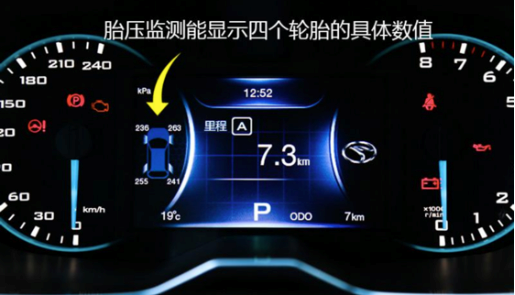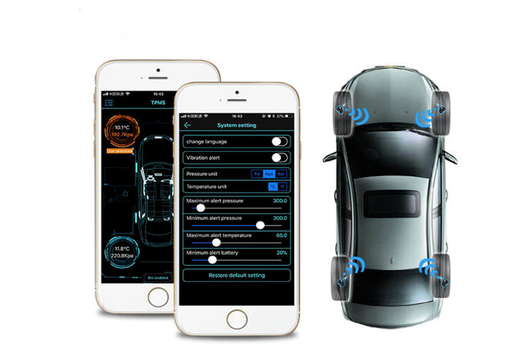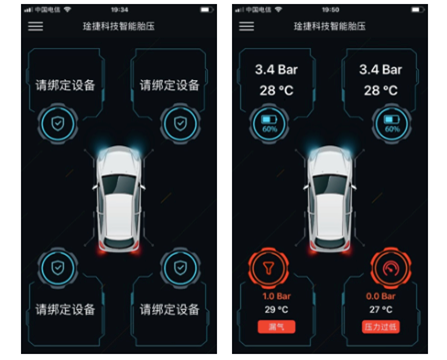The mandatory TPMS standard will be officially implemented this year, and the Bluetooth bonus is more convenient
TPMS (Automobile Tire Pressure Monitoring System) is an important safety topic in every country in the world, and countries around the world are gradually enacting TPMS as a mandatory standard. As the largest producer and consumer of automobiles, China will require it to be sold on January 1, 2020. 100% of passenger cars are compulsory installation.
This has brought strong expectations to manufacturers and investors in the industry. This year, with the formal implementation of TPMS mandatory standards, the market has become more and more enthusiastic about TPMS system integration. At present, there are hundreds of TPMS transmitter sensor module manufacturers in the domestic market, but the chips they use are concentrated sources In 3-4, the chips of foreign chip giants Infineon and Freescale occupy most of the market. Domestic chip manufacturers headed by Jinjie Electronics are driven by strong domestic standards. After years of concentrated research and development and tackling tough problems, they completed the automotive electronics AEC-Q100 certification in 2017 and began mass production. So far, nearly 10 million chips have been shipped. The sensor chip aftermarket and replacement parts market have been recognized by many customers, and the products have covered major well-known brand terminals. Relying on years of professional technology accumulation, as well as the requirements of the country and automakers for the localization of automotive semiconductors, Jinjie Electronics has gradually achieved breakthroughs and fixed points in pre-installed brand automakers. At present, the tire pressure sensor chips of Jingjie Electronics have begun stable mass production and shipment in many first-line front-loading factories, and have successfully entered the automotive sensor chip supply chain of BYD, Sany, Dongfeng and other front-loading factories. Become the core chip supplier for these car manufacturers' platform models.
The traditional front-mounted TPMS system mainly consists of the following two methods: one is the "four + one" method of the passenger car system, the fourth refers to four sensors, and the other refers to a receiver. The TPMS receiver is generally integrated in the car BCM system, or exists in the form of an independent radio frequency receiver. The second is the receiver of the commercial vehicle system, usually in the form of an independent "receiving box". Can receive more than 4 sensors at the same time. Either way, the receiver needs to be transferred to the in-car central control system via CAN or LIN before the data can be presented to the customer. This way the TPMS system naturally increases the cost of the receiver, even if the original The integration of 433Mhz/315Mhz reception in the body control unit will also increase software complexity and difficulty in adaptation.

In recent years, the trend of electrification, intelligence, and networking of vehicles has become more and more obvious, and the electronic architecture of the body is constantly being updated and iterated. For example, BYD's comprehensive promotion of the "10-in-1" system in the "E platform" at the end of 2018 is the best representative among them. The 10-in-1 system in the "E Platform" effectively combines the original complex combination of lights, multimedia, window lifts, smart keys, etc., which greatly simplifies the platform complexity, reduces weight and saves energy. Among them, it is a natural choice for the wireless transmission part to adopt Bluetooth transmission. At the same time, whether it is a traditional fuel vehicle or a new energy vehicle, the vehicle-mounted central control computer or TBOX naturally comes with Bluetooth transmission capabilities. In the foreseeable future, the trend of the development of TPMS communication methods based on Bluetooth transmission is becoming more and more obvious.
On the basis of traditional TPMS, Jingjie Electronics has broken through the application constraints of existing transmission methods. In early 2019, it launched the first-generation single-chip TPMS chip SNP729 with integrated Bluetooth transmission. Its main features are in addition to traditional TPMS pressure temperature sampling and LF transmission. In addition to the system, the 433Mhz and 2.4Ghz Bluetooth transmission methods are integrated for the first time, which truly enables customers to directly install four sensors to realize the existing TPMS system, and enables customers to see the pressure and temperature of tires directly through mobile phones. Data, improve security and customer experience. Imagine a scenario. If the original TPMS needs to synchronize the tire temperature and pressure data to the user's mobile phone, it must first be transferred to the vehicle central control or TBOX through the body receiver, and then sent to the 4G/5G wireless network Not to mention the complex system architecture of mobile phones, the real-time data transmission is also difficult to guarantee. If the sensor can be directly transmitted via Bluetooth, it can naturally be smoothly integrated into the vehicle central control and TBOX, and can also be received by the mobile phone in real time, which truly achieves the function of multi-terminal synchronous reception.

Compared with the Bluetooth TPMS used for after-installation by other vendors, the TPMS system has a higher level of integration, fewer peripheral components, and is compatible with 433Mhz and BLE sending functions. Compared with the cost of a system composed of discrete components, it has a greater savings, and the ease of use of radio frequency debugging and adaptation has been greatly improved. Jiejie Bluetooth TPMS truly eliminates the "one" from the traditional "four + one" system solution, making the vehicle TPMS transmission structure simpler and avoiding the difficulty of developing the original traditional receiving system. The following is the interface diagram of the receiver of the Bluetooth TPMS APP of Jinjie Electronics. The basic Bluetooth TPMS functions include ID binding, device adjustment, and tire temperature, tire pressure and battery power display, which are exactly the same as the functions provided by traditional tire pressure receiving.

Under the same sending and receiving conditions, compared to the traditional 433Mhz/315Mhz transmission system, another major advantage of Bluetooth is lower power consumption. In the case of the same sending current, the time period for Bluetooth to transmit a broadcast frame is about less than 1ms. Even if three broadcast channels are sent, the total transmission time is also within 3ms. The frame length of the traditional 433Mhz TPMS transmission frame is 12 bytes. If you send 3 frames at a time, the transmission baud rate is 9600, and the total transmission time exceeds 30ms, even if the Bluetooth transmission current is greater than the traditional TPMS transmission current, the overall current consumption It is also smaller than the traditional 433Mhz/315Mhz system, and the comprehensive power consumption has laid a solid foundation for future TPMS Bluetooth transmission. At present, after a year of development, JJ’s Bluetooth TPMS has withstood many tests in terms of integration, power consumption and reliability. It has been mass-produced by many customers, and customers’ willingness to adopt Bluetooth TPMS and actual shipments account for It is also gradually climbing.
The state proposes that the "new four modernizations" of automobiles (electricity, intelligence, networking, and sharing) will greatly increase the use of semiconductors in cars. As a pioneer and leader in local automotive semiconductor chips, Jingjie's first TPMS tire pressure sensor series chips have been mass-produced by many pre-installed brand customers and have won unanimous trust and praise. In addition to TPMS chips, newly developed automotive general-purpose sensor chips, new energy vehicle battery pack sensor chips, and in-vehicle wireless transmission chips have also entered the supply chain of many world-renowned automotive brands, and gradually achieved mass production. At present, the company has completed the integration and diversification of automotive sensor chips, boosting the localization of automotive chips! Dapeng rises with the same wind in one day, soaring to 90,000 miles. In the global automotive electronics IC design field where strong players are like forests, Jinjie Electronics has always kept a low profile and is committed to building its own powerful brand, contributing to the domestic automotive electronics industry, and contributing to the "China "Core" fills in more colorful strokes!





